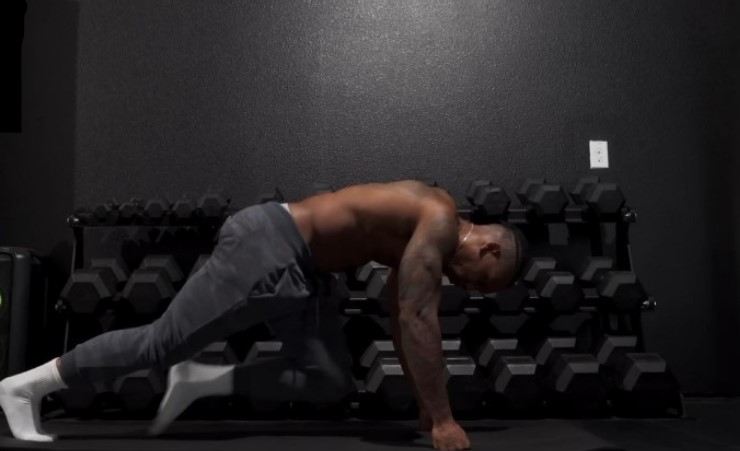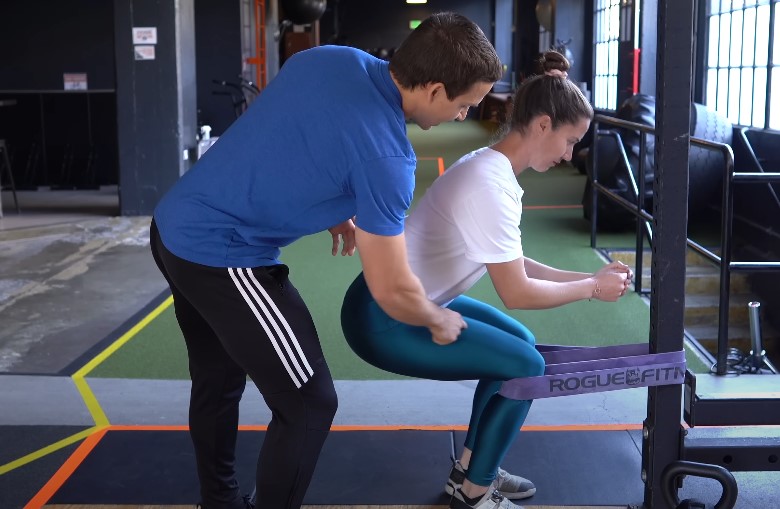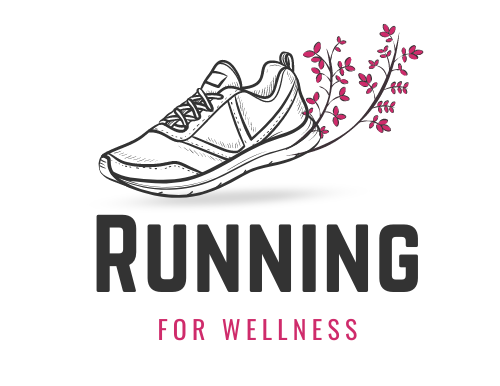Getting hurt at the gym can throw everything off. One pulled muscle and suddenly your momentum’s gone, your sleep’s wrecked, and your motivation starts to slide.
That’s why some of the best advice you’ll hear from a seasoned gym coach isn’t about lifting heavier or grinding harder; it’s about staying safe.
Staying injury-free isn’t just a nice bonus. It’s essential if you want to see progress without constant setbacks. Coaches who live and breathe training, plus experts from places like Harvard Health and the American College of Sports Medicine, say the smartest athletes aren’t just strong. They’re careful, prepared, and honest with their bodies.
Let’s walk through the most effective strategies a great coach would give you; real advice that works in real gyms, for real people.
A Quick Look
| Tip | Key Action | Example | Source |
| Warm Up | 5–10 min cardio + dynamic stretch | Jog + leg swings | American College of Sports Medicine |
| Master Form | Learn proper technique | Neutral spine in squats | Journal of Strength and Conditioning Research |
| Progress Gradually | Build slowly | Walk before jogging | Harvard Health |
| Cross-Train | Vary workouts | Alternate upper/lower/cardio | Aston University |
| Listen to Pain | Stop and modify if needed | Switch squats if knees hurt | OnePeloton |
| Rest & Recover | 1–2 rest days/week + 7–9 hrs sleep | Yoga or walk on off-days | Gofit Gym / Harvard Health |
| Hydration & Fuel | Drink water, eat balanced | 400–600 ml water before workout | American Council on Exercise |
| Equipment Matters | Wear sport-specific gear | Running shoes for cardio | Aston University |
| Cool Down | Light cardio + static stretch | Walk + hamstring stretch | Harvard Health |
| Train Legs | Lower body workouts improve stability | Squats, lunges, glutes | Gofit Gym |
Warm Up

Most people rush into workouts. Big mistake. A proper warm-up primes your muscles and joints, making sure your body is ready to move safely.
Here’s a simple structure that works:
- 5–10 minutes of light cardio (stationary bike, jump rope, incline walk)
- Dynamic movements (arm circles, high knees, walking lunges, leg swings)
That light sweat and movement increase circulation, raise your body temperature, and activate key muscles. PubMed research found that warming up can slash the risk of strains and muscle tears by nearly 50%.
Skipping this step is like pulling a cold rubber band – snap.
Get Your Form Checked – Often

If your coach could tattoo one piece of advice on your gym bag, it might be: “Form first, always.”
Incorrect technique is behind so many gym injuries, especially in weightlifting. It’s not just about lifting clean—it’s about training your nervous system to move well under pressure.
Let’s break it down with a couple of examples:
- Squats: Keep your back neutral, push your knees out, don’t let your heels lift.
- Deadlifts: Hinge at the hips, not the lower back. Bar stays close to the shins.
- Bench Press: Don’t bounce the bar. Keep wrists straight, shoulder blades tucked.
If something feels off, ask a trainer. One short session can fix what bad YouTube tutorials might confuse. According to Research, proper form, especially when lifting heavy, is one of the most powerful tools for preventing injuries.
And don’t ego-lift. Coaches see it every day: someone loading the bar with more weight than they can handle just to impress others. It’s not worth the chiropractor visits.
Also, if you’re involved in training others, advancing your credentials, like through an online family nurse practitioner master’s degree program, can deepen your understanding of anatomy and injury prevention.
Start Small. Progress Steadily.

Everyone wants results fast, but fast often leads to burnout or injury.
A good coach will always tell you: pace it. If you’re new, or coming back after time off, treat your body with patience. Gradual overload works better than sudden shock.
Here’s what progression looks like:
- Start with bodyweight or light dumbbells
- Add 5–10% load weekly, max
- Keep intensity at 60–70% in the early weeks
Example: New to running? Alternate 1 minute jogging with 2 minutes walking for 20 minutes total. Do that 3x/week before ramping up.
Harvard Health recommends low-impact options like cycling or swimming if you have joint sensitivity. The idea is to build capacity, not break yourself trying.
Mix Up Your Routine with Cross-Training
Doing the same workout every day can wear down joints and tendons. Overuse injuries aren’t sudden, they sneak up on you after weeks or months of repetitive stress.
Cross-training gives certain muscles a break while keeping you active.
Rotate between activities like:
- Weight training
- Swimming
- Bodyweight calisthenics
- Walking, biking, hiking
- Yoga or Pilates
Aston University points out that cross-training supports better overall muscle balance and can reduce injury from repeated motion.
For example, a runner might cross-train with strength training twice a week to build glute and core strength, key for injury prevention.
Respect Pain – It’s Trying to Tell You Something

The phrase “no pain, no gain” has aged badly. Pain isn’t a badge of honor. It’s a warning light.
Sharp, stabbing, or sudden pain mid-exercise is your cue to stop. Don’t push through it.
Instead:
- Switch to a variation (e.g., bodyweight squats instead of barbell if your knees hurt)
- Reduce range of motion
- Rest and reassess
OnePeloton’s trainers note that ignoring pain is one of the fastest ways to turn a tweak into a tear.
If something doesn’t feel right, don’t keep going just because it’s on your schedule. The best gym-goers know when to pull back.
Take Rest Days Seriously
Progress happens during recovery, not during the workout itself. Overtraining leads to chronic fatigue, inflammation, and yes—injuries.
A solid coach will always schedule 1–2 rest days per week. Recovery doesn’t mean doing nothing—it can be active.
Try on rest days:
- Easy yoga
- Foam rolling
- 30-minute walk
- Mobility work
Sleep is another pillar here. Aim for 7–9 hours nightly. According to Harvard Health, poor sleep impairs coordination, slows reaction time, and increases injury risk across the board.
And if you’re always sore or dragging? That’s a red flag your body is under-recovering.
Fuel Up and Hydrate Like It Matters
Injuries aren’t always about movement—they can stem from fatigue, cramps, or poor recovery. And dehydration plays a bigger role than most people realize.
According to the American Council on Exercise, you should drink:
- 400–600 ml of water 2–3 hours before exercise
- 100–250 ml every 10–20 minutes during your workout
Hydration keeps muscles contracting smoothly and joints cushioned. Combine that with a solid nutrition plan—carbs for energy, protein for repair, healthy fats for joint support.
Pre-workout snack idea: Oatmeal with banana and peanut butter
Post-workout meal: Grilled chicken, quinoa, roasted veggies
Fuel like you care. Your muscles will thank you.
Gear Up Properly
The wrong shoes can do more damage than you’d expect. Running in old sneakers? Lifting in cushioned shoes? That’s a recipe for rolled ankles or knee pain.
Make sure to:
- Match shoes to your activity (flat shoes for lifting, supportive shoes for cardio)
- Replace worn-out shoes every 300–500 miles or 6–12 months
- Use gloves, belts, wraps, or braces if needed
Athletes who use proper equipment don’t do it just for comfort; it’s about preventing accidents.
And no shame in using accessories. They’re tools, not crutches.
Cool Down the Right Way
You don’t just sprint out of the gym the second your last rep is done. Cooling down helps your body settle—heart rate, blood pressure, even your nervous system.
Spend 5–10 minutes doing:
- Light cardio (walk, easy spin)
- Static stretches for key areas (hamstrings, shoulders, hips)
Example: After leg day, stretch your hip flexors, quads, and calves. Take slow breaths and relax into the stretch.
Don’t Skip Leg Day (Seriously)
A strong lower body stabilizes everything else. Weak glutes, hamstrings, or calves make your upper body work harder than it should.
Injury prevention isn’t always about the site of the injury—it’s about the chain leading to it.
Key lower body movements:
- Bodyweight squats and progressions
- Lunges and step-ups
- Deadlifts
- Glute bridges
Other Smart Safety Tips from the Pros
- Book a trainer session: Even one hour with a coach can teach you safe lifting cues and equipment use.
- Use protective gear: Depending on the activity, helmets, mouth guards, goggles, or pads may be smart.
- Know when to stop: Any signs of dizziness, nausea, or chest pain mean you should immediately quit the session and seek help.
Final Thoughts
Injury prevention isn’t glamorous, but it’s the backbone of sustainable fitness. It’s what separates the short bursts from the long-term results.
So next time you step into the gym, carry that coach’s voice with you, the one that keeps you moving smarter, not just harder.
Related Posts:
- Top 400 Hilarious Gym Quotes to Keep You Motivated
- How Long Does It Take to Train for a Half Marathon?
- How Can You Start a Career as a Running Coach?
- 25 Simple Running Motivation Tips To Get You Moving
- How Far Is a Half Marathon? Everything You Need to Know
- 6 Best Running Playlists Music for Every Pace and Mood







